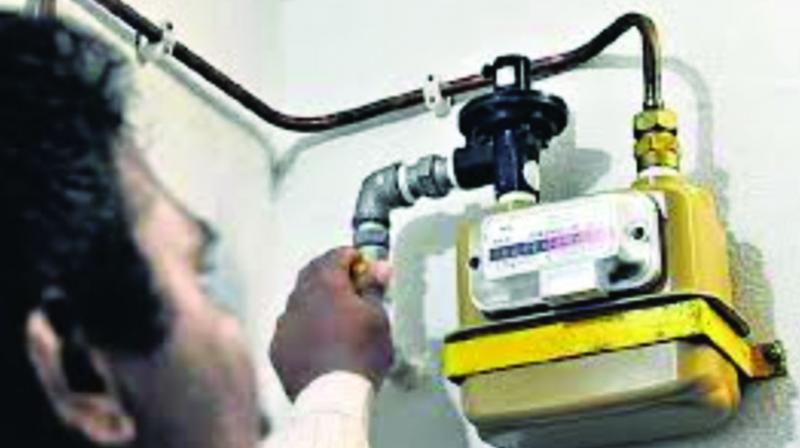Hyderabad: Piped gas continues to be distant dream

Hyderabad: Though piped gas is cheaper than LPG supplied in cylinders by Rs 4 per kilo, and is environmentally better, the process of laying pipelines is moving at a very slow pace in the city. There is delay in getting the necessary permissions and in laying the network in congested localities.
Bhagyanagar Gas Limited (BGL) is authorised to supply piped gas in the city. It has laid 42 km of pipelines, covering Balanagar, Shameerpet and Medchal. Laying of a pipeline from Kukatpally to Miyapur is in progress.
PNG or piped natural gas, which is supplied for domestic use (CNG or compressed natural gas is supplied for industrial use), has many advantages: it is economical, environment-friendly and safe, easy and quick to transport.
There is no loss of fuel due to varying atmospheric conditions and no pilferage by staff.
Piped gas is also supplied round the clock and takes less manpower to operate. There is no waiting for the cylinder to arrive. The only danger is from underground leaks so the network must be well maintained. But natural gas is less lethal than LPG when it leaks, as it has a lower density. When LPG leaks, it forms a cloud in any closed space and this causes an explosion, but natural gas when leaked evaporates and spreads out.
Experts concerned over safety of pipeline
To improve safety and transport procedures in supplying gas, various industry players from across the country gathered in the city recently for a conference organised by the Petroleum and Explosives Safety Organisation (PESO), Hyderabad unit, as part of its Golden Jubilee year.
The two-day conference inaugurated by N.T. Sahu, chief controller of explosives, discussed best practices and procedures followed by various organisations in the world and country.
Dr R. Venugopal, dy chief controller of explosives, Hyderabad, said PESO aims at augmenting and streamlining procedures so as to supply gas through pipelines safely.
The piped gas network is criss-crossing the nation, but at the same time there is increasing risks in supply and maintenance of the pipelines. Organisations are following different standard operating procedures for maintenance.
However, only through systematic maintenance schedules and by following safe operating procedures can accidents in pipelines be prevented.
Two major aspects of pipeline safety are the design of the pipe and the construction of the pipeline network. Pipes of the maximum thickness and best quality, that are resistant to the various factors affecting pipeline health, combined with advanced technology, should be used.
Construction or laying of the pipeline underground is the second concern. Pipes should be laid at a depth considered safe and care must be taken when pipes pass through different terrains, avoiding deep-rooted trees and permanent constructions in the Right of Use (RoU), which is the pipeline boundary.
Pipelines are laid at a minimum depth of 1.5 metres and sometimes deeper. External factors such as railway and high voltage electricity supply lines aboveground in close proximity affects the health of the pipeline.
The conference discussed how to coordinate with other agencies, by partnering with them, and how pipeline life can be improved.

